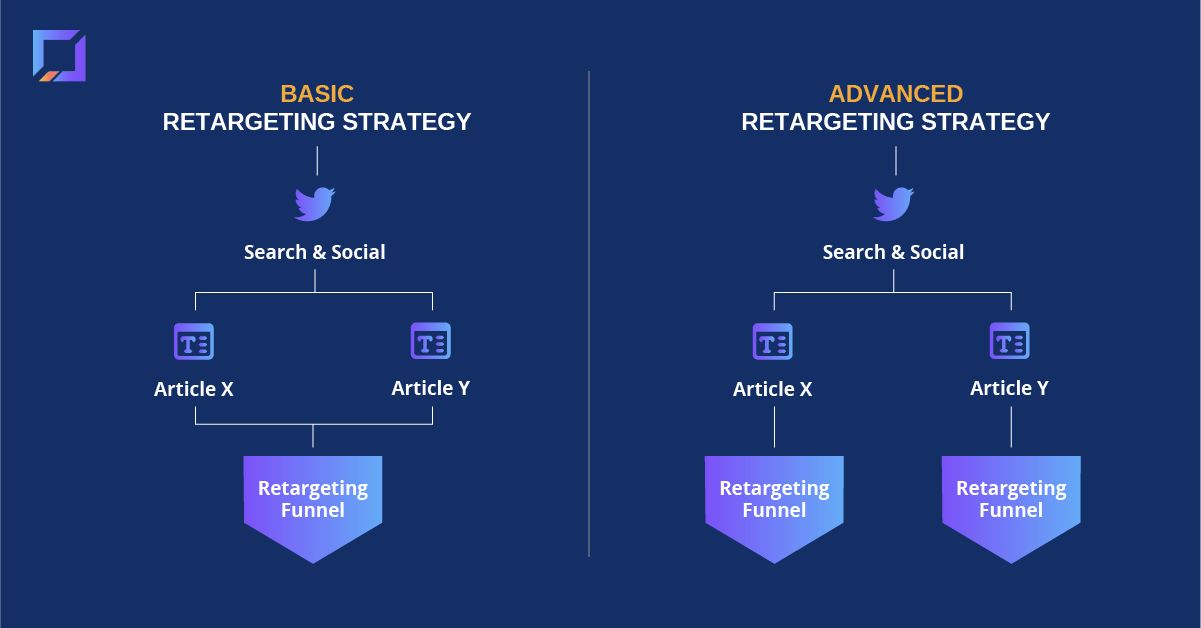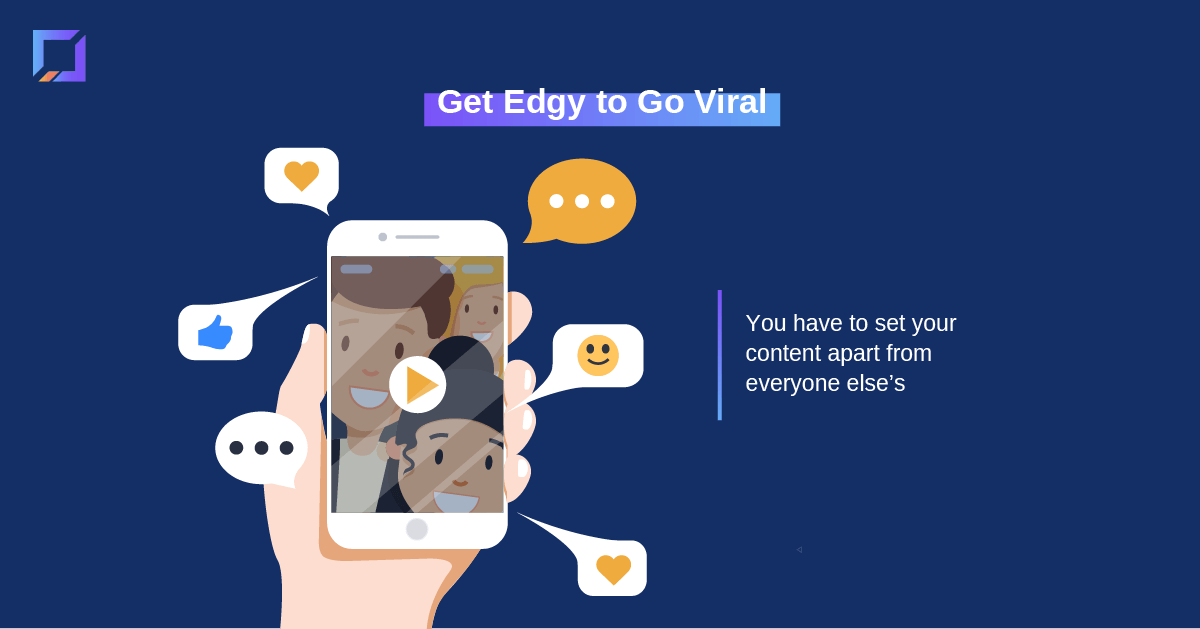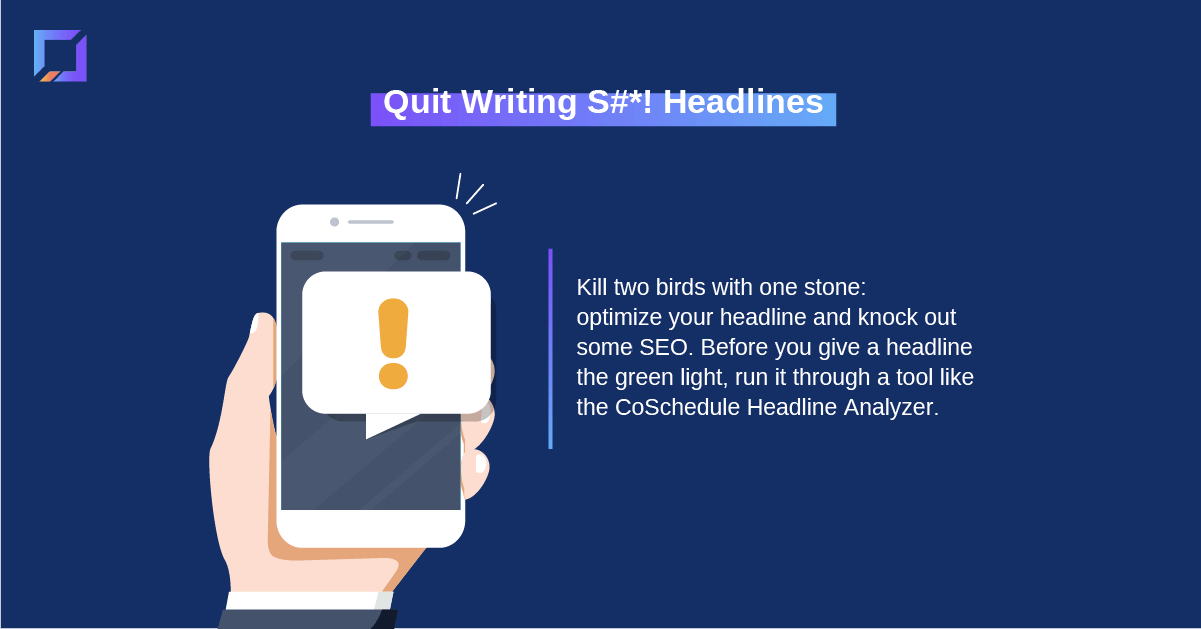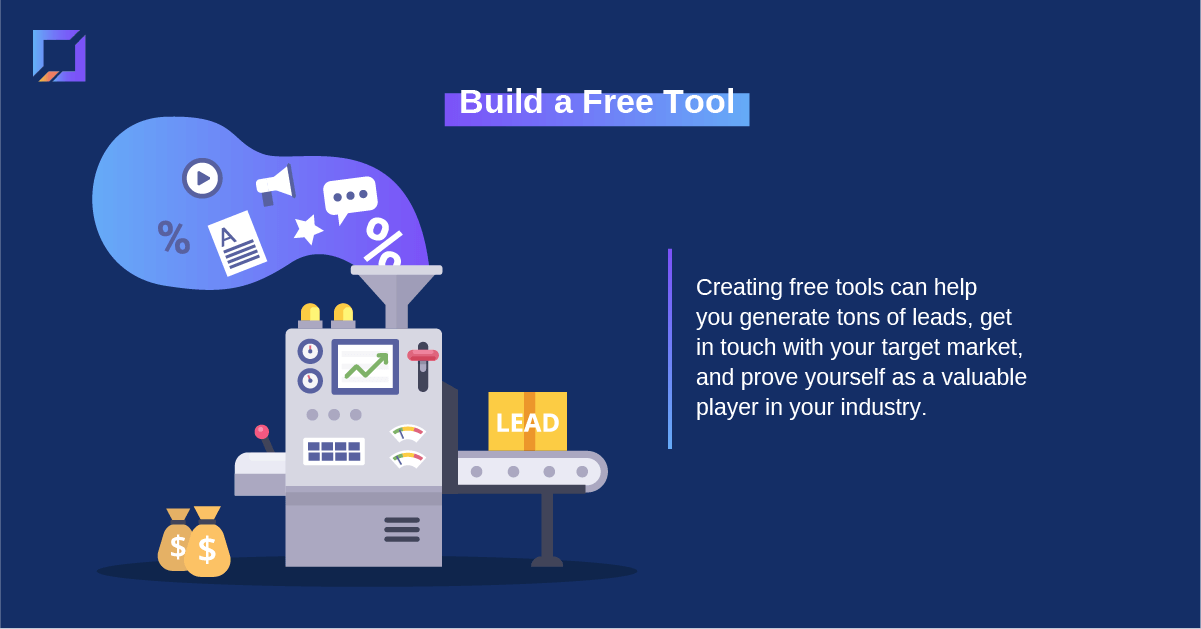Blogging is hard enough.
But creating a content growth strategy that works these days is just that – work. Painstaking, hair-pulling, nap-inducing work.
The kind of work that makes you want to start drinking at 3 PM on a Tuesday.
But don’t crack open that bottle just yet.
There are a few shortcuts out there to help your process suck less and take your content growth strategy from zero to 100 real quick.
When you think about what a content marketing strategy is, a few generic “best practices” probably come to mind.
You might think about building personas, writing tons of long-form content, or doing so much keyword research that your head spins.
But all of that stuff doesn’t matter unless you change the way you think about content marketing in the first place.
Your content growth journey will start to get easier as soon as you flip the script in your mind about what one actually is. Or rather, should be.
We’re a content marketing agency that has clients paying us tens of thousands each month, so we know a thing or two about what actually works.

Get long-term ROI.
We help you grow through expertise, strategy, and the best content on the web.
TABLE OF CONTENTS
What Is a Content Marketing Strategy, Actually?
A content marketing strategy isn’t just about marketing all of the products you sell or the content you create.
The real point is to stimulate ongoing interest in your brand.
Sure, your content will get tons of attention if you play your cards right. But that’s not the actual end game. Or the main point.
The point is to draw in an audience that’s interested in what you have to say. One that trusts you.
Because those readers are the ones with the best potential for becoming lifelong customers. In fact, 62% of millennials say that they think online content often encourages brand loyalty.

Think about brands like Stanley. Sure, they create awesome products (like their vacuum bottle thermos).
But the content they create is designed to draw in a broad audience and get those readers on their site time and time again.
Like this blog post about how to host a football watch party, for example.

The post isn’t focused around the Stanley brand at all. It’s all about helping readers throw a great football get together.
But then, at the end of the article, the brand subtly ties one of their products in with the post.

That’s how you do it.
Some brands use influencers to help them with their content growth strategy, like this sponsored YouTube video from Water Underground Project by Michelle Khare.

The video revolves around Michelle Khare trying to haul five gallons of water through the wilderness for two miles.
At first, it seems like yet another internet challenge, until Michelle explains that most women in poverty-stricken countries carried five gallons of water or more for huge distances each day.
She attempts to carry the water to prove a point: most people are spoiled a** rotten because they have running water.
So if you want to help those who don’t, you can donate to Water Underground Project, a non-profit business who also sponsored the video.

If I’m honest, this video successfully guilt-tripped me into donating. So it clearly did its job.
According to the email I received a few weeks after donating, the video helped raise more than $30,000 for a Water Underground project — more than seven times the amount of the original $4,000 goal.

While the business behind this content is a nonprofit, they’re using the same content and Youtube marketing strategies that for-profit companies could and should be using.
They’re indirectly promoting their company to gain more trusting “customers.”
To create your content marketing strategy, you’ll need some sort of framework.
Content Marketing Strategy Framework: How to Create a Content Strategy
The folks at InfusionSoft have a pretty mind-blowing way of outlining a content marketing strategy framework.
It’s essentially a five-step strategy for “How to Create a Content Marketing Strategy for Dummies.”
First, evaluate your objectives. Why do you want to do content marketing? Is it just because someone told you that you should?
Light some incense, put on “Only Time” by Enya, and evaluate why you actually want to create a content growth strategy.

Second, figure out how you plan to measure your success.
Are you going to base it on how many views or shares you get on each piece of content? Or how your content correlates with sales? Maybe both?
There’s no right or wrong way to measure success because the way you measure it will depend on what success specifically looks like for you and your brand.
Third, outline your audience. Who do you want to reach? Who is your target demographic?
Once you’ve figured that out, you can move on to the fourth step: deciding which channels to place your content on. Where can you best reach your target audience?
Finally, it’s time for the fifth step, which is choosing your tactics. How do you plan to meet all of your objectives?
This might take a bit of time and collaboration with your team, but you should have a solid framework outlined by the time you’ve completed each step.
If you still need some help or you’re lazy (like me) and want a more guided option, use this free content marketing framework workbook from Content Marketing Institute.

Instead of five steps or areas, this workbook covers seven:
- Plan
- Audience
- Story
- Channels
- Process
- Conversations
- Measurement
Now that you have a framework laid out, we need to talk about the good, the bad, and the ugly. You don’t want your content to be a pair of Crocs in a world full of Louboutins.

What works in the world of content marketing? What doesn’t?
Content Marketing Strategy Examples: The Good, the Bad, and the Ugly
When it comes to content marketing, there are a few things you should avoid.
Sure, a good old blog post is pretty safe. But even that could go wrong.
For example, if you pretend to write something that’s groundbreaking or life-changing when it just isn’t, you’ll probably get some eye rolls.
I’m looking at you, generic post called “Eat Less to Lose Weight.”
Avoid writing about obvious or well-known topics. Instead, focus on something a bit more niche or tell your audience something they don’t already know.
That said, you don’t want to get too technical.
Just like the experts from our MasterClass review can attest, it’s the details that make all the difference!
Technical posts are part of what was holding back ModernWeb before Grow & Convert helped them gain 10,000 hyper-targeted visitors in just three weeks with a content strategy makeover.

If your industry is highly technical, break down complex topics into layman’s terms so that even beginners can understand what you’re saying.
And, if you decide to use infographics, keep it simple. No one wants to view an infographic that’s too heavy on the “graphics” and too light on the “info.”

That said, there are some things you should do when crafting your content marketing strategy, like retarget your content to more than one segmented audience.

And never forget to think outside of the box. Your content doesn’t have to be limited to the cookie cutter options like a blog post or a video.
Create a game instead, like SEMrush’s Easter Egg Hunt.

The egg hunt challenges users to find 15 “Easter eggs,” which can only be discovered by navigating through certain SEMrush tools.
According to the Content Marketing Institute, the game, launched in April 2017, has earned more than 9,300 participants and more than eight million Twitter impressions.
Create your own game as a way to get users onto your site to explore.
Keep reading for similar content growth tips that will take your work from weak to chic.
Get Edgy to Go Viral

We’ve all dreamed about going viral at one point or another. But to do so, you have to set your content apart from everyone else’s.
And sometimes, that can be hard. But it’s also why being controversial might not be a bad thing.
Controversies get attention. Just look at the views that Childish Gambino racked up on his controversial music video for “This Is America.”

It works. And it works because people have emotional reactions to controversy.
Don’t just take my word for it, though. Look at the PAD emotional state model, a psychological model created to measure and describe different emotional states.
PAD stands for:
- Pleasure
- Arousal
- Dominance
Pleasure
In psychology, valence is a measurement for the strength of different emotional responses. And valence can either be positive or negative.
For example, psychologists consider anger a high-valence negative emotion while they regard happiness as a high-valence positive emotion. Indifference is a low-valence emotion.

Viewing, seeing, or hearing about a controversial topic will elicit some response from your readers or viewers, whether it be a pleasure (positive high-valence) or displeasure (negative high-valence).
This response can have a significant impact on decision making.
TL;DR? Don’t piss off your audience with your controversial post unless the solution to their anger is something you can offer them.
Arousal
Arousal is a measurement of how energized a person feels. This can be positive or negative, just like valence.
Anxiety, for example, constitutes negative arousal, while excitement constitutes positive arousal.
Since these are emotions, arousal (whether positive or negative) can also drive decisions.
Side note: I firmly believe this is why dog videos rack up so many views.

They cause the perfect combination of positive arousal and high-valence positive emotions in viewers unless you’re heartless.
Dominance
Dominance/submissiveness refers to how “in control” a person feels about the current state of their emotions, regardless of whether or not they’re positive or negative.
For example, psychologists consider fear as a submissive emotion, while anger is a dominant one.
The more dominant a person is feeling, the faster they will be able to make a decision.
This means that people are more likely to purchase, share, or talk about something if they feel that it gives them some control.
Keep the PAD model in mind when creating controversial content that pushes boundaries and elicits a response from your audience.
If you hit the nail on the head and cause readers or viewers to feel the perfect levels of pleasure, arousal, and dominance, your content will have the potential to see huge numbers.
But you have to get the headline right.

Quit Writing S#*! Headlines
“Good” content isn’t good enough anymore. Neither is a “good” headline.
Format your headlines based on the primary and secondary keywords you plan to use. That way, you can kill two birds with one stone: optimize your headline and knock out some SEO.
Before you give a headline the green light, run it through a tool like the CoSchedule Headline Analyzer.
This tool will tell you your headline type, give it an overall score, and complete an analysis of its structure, grammar, and readability.

If you get a “high score” headline, the color of the “score” will turn from red or yellow to green.

The tool also breaks down what percentage of the words used are common, uncommon, emotional, or power words.
You’ll also be able to see which keywords you are using in your headline, as well as the overall “sentiment” of the words.

If you want to get really crazy, build your own free tools and use those to market your brand.

Build a Free Tool
Most people might not think that tools count as content, but I disagree.
Creating free tools like WordStream’s Adwords Grader can help you generate tons of leads, get in touch with your target market, and prove yourself as a valuable player in your industry.
Tools, such as online e-signature, will draw in more of your target audience by helping them accomplish tasks that would otherwise be time-consuming, just like link-worthy blog posts do by offering information, tips, and examples.
And it’s easy to gain conversions with free tools, because how else will users be able to receive that report you promised them?

You should also use your own data to provide valuable research that can help take your brand to the next level.

Use Your Own Data
Original data is one of the best ways to prove yourself as an industry thought leader that people will trust (and want to buy from).
Think of a few commonly known best practices in your industry that need some more research to back up their effectiveness.
Then, conduct your own research to prove or disprove this belief.
Survey your current customer base or put it to the test yourself to see if it has any positive or negative effect on your content.
Then, compile all of your research and post it as an exclusive resource.
You can even make it an annual report and release your findings each year, like HubSpot’s State of Inbound reports.

If you don’t want to go through the trouble of completing your own research, it’s pretty easy to use your existing numbers as examples.
Here’s a blog post we refer to about our MRR, for example.
Conclusion
Creating a content growth strategy isn’t the most fun way to spend your time.
But there are a few ways to take your content growth strategy from zero to 100 in no time.
For starters, you should throw out the idea that basic best practices work for everyone. Instead, think of content marketing as a way to stimulate interest in your brand, not promote it.
Create a content marketing strategy framework by deciding on your objectives, metrics, audience, channels, and tactics.
Then, avoid making rookie mistakes like writing hyper-technical posts that scare away most readers.
Instead, think outside of the box.
Get edgy and use the PAD emotional state model for a greater chance of going viral.
Analyze all of your headlines with the CoSchedule Headline Analyzer and include primary and secondary keywords in them for an added SEO bonus.
Remember that content doesn’t have to be limited to the norm. Create your own free tool to generate and capture leads.
Finally, use your own data in your content, whether it’s data from a case study you complete or your existing numbers.
Your content growth strategy doesn’t have to suffer any longer, and neither do you. Pick yourself up, dust yourself off, and start creating the content that your audience deserves.




